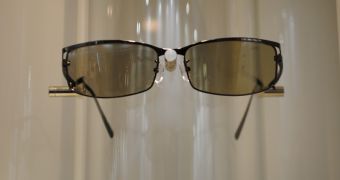3D has steadily been gaining traction, especially over the past year, and it appears that LG is ready to heighten the quality and accessibility by a notch with its new FPR technology.
Based on the Patterned Retarder (PR) technology, FPR (Film Patterned Retarder) with polarized glasses seems to have surmounted its previous drawback.
Initially, it was too expensive because it needed to add an extra polarizing glass substrate to the LCD TV panel.
Now, FPR has reached the point where it can use film instead of glass, reducing the extra cost to a fourth of what it used to be, while the polarized glasses are five times cheaper than shutter glasses.
What FPR is famous for is how it does not produce crosstalk of flicker, meaning that eye fatigue and poor picture quality are less of an issue, as are actual medical conditions, like photosensitive epilepsy.
“Problems with the SG type panel included the weight of the glasses, power consumption and reduced brightness. However, LG Display’s FPR 3D panel has no flickering, produces minimal cross talk and delivers a bright screen,”said Dr. James Sheedy, Director of Optometry Research Center at Pacific University in the US.
“Also, the glasses can be made with curved lenses, like regular glasses, so it is superior in terms of protecting eyesight,” he added.
“Whereas first generation shutter glass technology introduced us to the possibility of 3D TV, next generation FPR makes 3D practical for mainstream use,” remarked LG Display CEO Mr. Kwon Young Soo.
“FPR will effectively allow manufacturers to create an incredible quality 3D TV experience that is healthy, convenient and affordable – all factors hindering the popularity of first generation 3D products.”
Currently, FPR 3D TVs are only available in China, but the US and Europe markets should soon receive their own such products as well.

 14 DAY TRIAL //
14 DAY TRIAL //